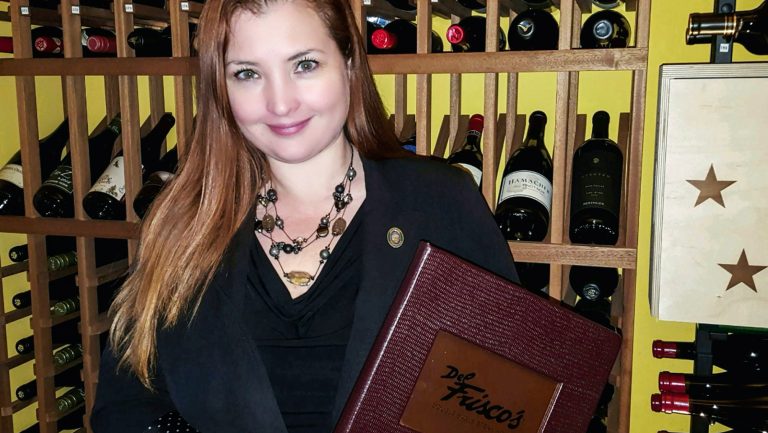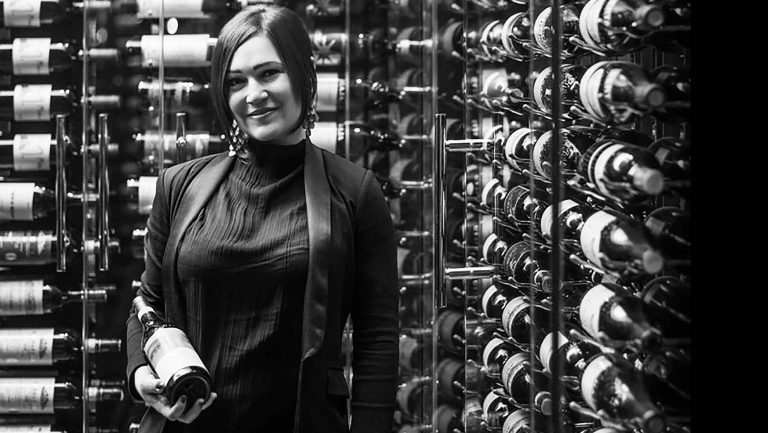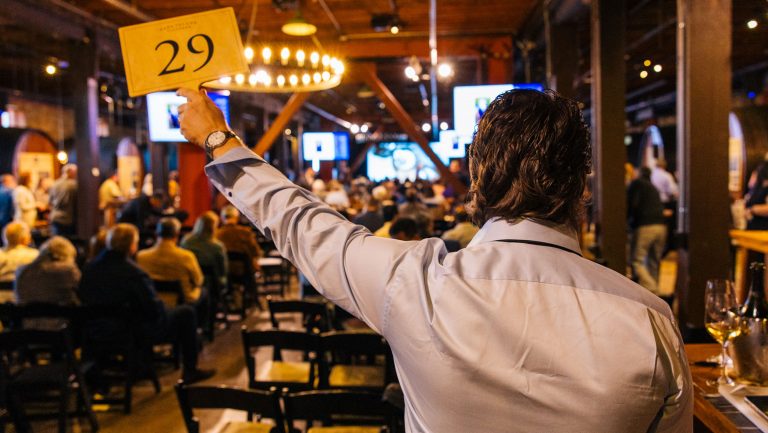There was a time when extensive wine programs were commonplace in the U.S. The heyday of the large restaurant wine list, however, has come and gone. Iconic spots like Cru, Rubicon, Veritas, and Charlie Trotter’s are no more. These days there are fewer large programs than ever. The immense expense and difficulty of running a program with thousands of SKUs that must constantly be replaced is a harsh reality for many restaurateurs, and in the end the bottom line must be abided by. But the large lists haven’t all disappeared; some intrepid restaurants still proudly observe the tradition. In an effort to learn what it takes to manage a long-running, successful large program, SevenFifty Daily spoke with sommeliers across the country who are doing just that. Here are the strategies they use to maintain their substantial lists.
Build Strong Relationships
A great wine program isn’t built in a day. To create vintage depth and producer breadth, there’s no substitute for a long buying history. Rachael Lowe, the beverage director at Spiaggia in Chicago, explains that the restaurant’s 46-page Italian-focused list is largely the work of her predecessors. “The restaurant has been open for 34 years,” she says. “I inherited this list from the sommeliers before me.” Since she took over in 2014 as wine director, Rachael has both expanded the list and continued to add depth, moving from a strictly Italian-focused program to one that embraces Champagne and Bordeaux wines. “When I came on board, I added some non-Italian wines for fun, but it was a small selection,” says Lowe. The goal was to preserve the identity of the list but make it accessible to people who might not be as familiar with Italian wine.
Decades of purchase history give a restaurant buying power in more than one way. That history creates long-standing relationships with both distributors and producers, and it opens the door to greater shares of allocated product down the road. A restaurant that has purchased thousands of dollars of wine from a particular producer over the years is more likely to be offered ex-cellar releases and library wines. Buying power can also be compounded over time, especially if a new sommelier is able to continue managing the relationships that previous ones established. “Henry Bishop was the original wine director,” says Lowe. “People still talk about him—he loved interesting wines.” The first sommeliers building a program set it up for success down the road, and often are the ones to establish those relationships.

Don’t miss the latest drinks industry news and insights. Sign up for our award-winning newsletters and get insider intel, resources, and trends delivered to your inbox every week.
At Acquerello in San Francisco, Gianpaolo Paterlini, the wine director, made an effort early on to think about the future of the wine program. He began working at the restaurant in 2007—and started purchasing wines for the list that year—and was promoted to wine director in 2010. Acquerello’s 102-page wine list has a strong focus on Italian wines and, in particular, wines from the country’s Piedmont region. “I was able to build Acquerello’s list into what it is today by investing in current vintages for many years without putting the wines on the list,” Paterlini says. “Keeping things off the list allows me to add them whenever a particular category or section is depleted.” For Acquerello, this has turned out to be a winning strategy. For most restaurants, though, it would be a difficult proposition, considering that storage space is often limited and it might not make sense to devote what space there is to wines that may not sell for years.
Replenish Inventory
When a restaurant is selling wine night after night, the riches of any wine list will be depleted over time. In the first place, the wines are there to be sold. Also, regular customers will mine the list for hidden gems. Educated guests of all stripes will snap up a great buy when they see it. And for good reason: A well-run program should pass on tremendous value to guests.
At Tribeca Grill in New York City, Head Sommelier Daniel Jung inherited a wine list that was the product of generations of astute management when he started in 2015. The 74-page list covers a wide swath of classics, including Burgundy, Bordeaux, Rhône, and Napa. The Grill’s Château Rayas list is one of the greatest in the world. It takes four sommeliers to run the restaurant’s program daily. Says Jung, “We’ve been open since 1990, and we got the Wine Spectator Grand Award in 2002. The challenge [for me] is that people have high expectations of old vintages, and [they expect] that those wines are still available at the same low prices they’ve always been.”

3 Approaches for Organizing a Wine List
Wine directors from around the country discuss how they structure their wine lists
The better the sommeliers before you have done, the stronger the opinions on your own maintenance will be. There will be an expectation that you’ll offer value and that you’ll continue to offer wines with age, which are becoming more and more difficult to find. Jung adds, “There are a lot of wines on our list that are under retail price. We keep it that way because that’s who we are. We don’t need to mark up everything astronomically. The list needs to be well curated with correct pricing.” Even so, list depletion is a continual concern.
“When it rains, it pours,” says Lowe. “When everyone’s buying old wines at a table, it seems to compound [the problem]. It makes it harder to refill your shelves.” A great wine list is not a museum exhibit, but instead a perpetual smorgasbord that’s always being refreshed with new dishes. If a restaurant is open for business, it’s inviting people to come inside and drink whatever is on the list. As the restaurant turns wine over, it will need to be replenished. So what are the best ways to do that?
“It’s not just about having great relationships with your distributors,” says Jung, “but cultivating collector relationships and finding old private cellars.” Many distributors will offer back vintage or mixed library cases to their best accounts. For Lowe, it’s a matter of “keeping your finger on the pulse of where you can source things.” For her, this includes auction houses such as Hart Davis Hart, and wine traders such as Ventoux Fine Wine. At Acquerello, Paterlini has cultivated a “network of vendors who specialize in older vintages,” and this network is often able to help backfill vacated spots on the list.
Many states have reputable and honest retail sources that can be used to supply back vintages, although a restaurant will suffer a bit on margin when paying a retail markup. The speculative market for old and rare wines prevents restaurants from enjoying a full markup on aged product. Sommeliers have to find value from more than just the collectible speculation wines, suggests Lowe. “Collectors tend to drive prices up,” she says. They have the means to bid high to get the products they want.
Plan for the Future
To successfully maintain an extensive wine list, a sommelier needs to look further than the next month or year. Not only do you want to honor the sommeliers who came before you, but you want to consider the next three who will come after you. Paterlini insists that “continuing to buy current vintages every year sets us up for success years down the road.” Those wines are certainly going to be harder to come by later, and it helps to have a deep stock to draw from. But it’s a struggle, of course, for many restaurants to find space. At Spiaggia, Lowe’s biggest challenge is storage. “If I could buy things and lay them down, it would be awesome,” she says. “I’d love to buy things for future wine directors and set them aside. But with budgetary concerns [added to storage problems], I just can’t.”
Few restaurants have the space and the budget to think very far into the future. For the present, Tribeca Grill’s Jung believes that the way you sell wine day to day has a profound effect on your success. “Don’t try to sell your ego,” he says. “If you listen, you’ll know what people want. And it will help you maintain the wine list over time.” Guests are the ultimate litmus test for how a program is doing. “Listen to what they want and deliver it,” says Jung. “Then you’ll know how to build your wine list.”

Dispatch
Sign up for our award-winning newsletter
Don’t miss the latest drinks industry news and insights—delivered to your inbox every week.
Jackson Rohrbaugh, MS, is a Seattle native who has a bachelor’s degree in creative writing from the University of Washington. He is the founder of Crunchy Red Fruit, a subscription wine box focused on organic, sustainable wines from small producers. Follow him on Instagram.







